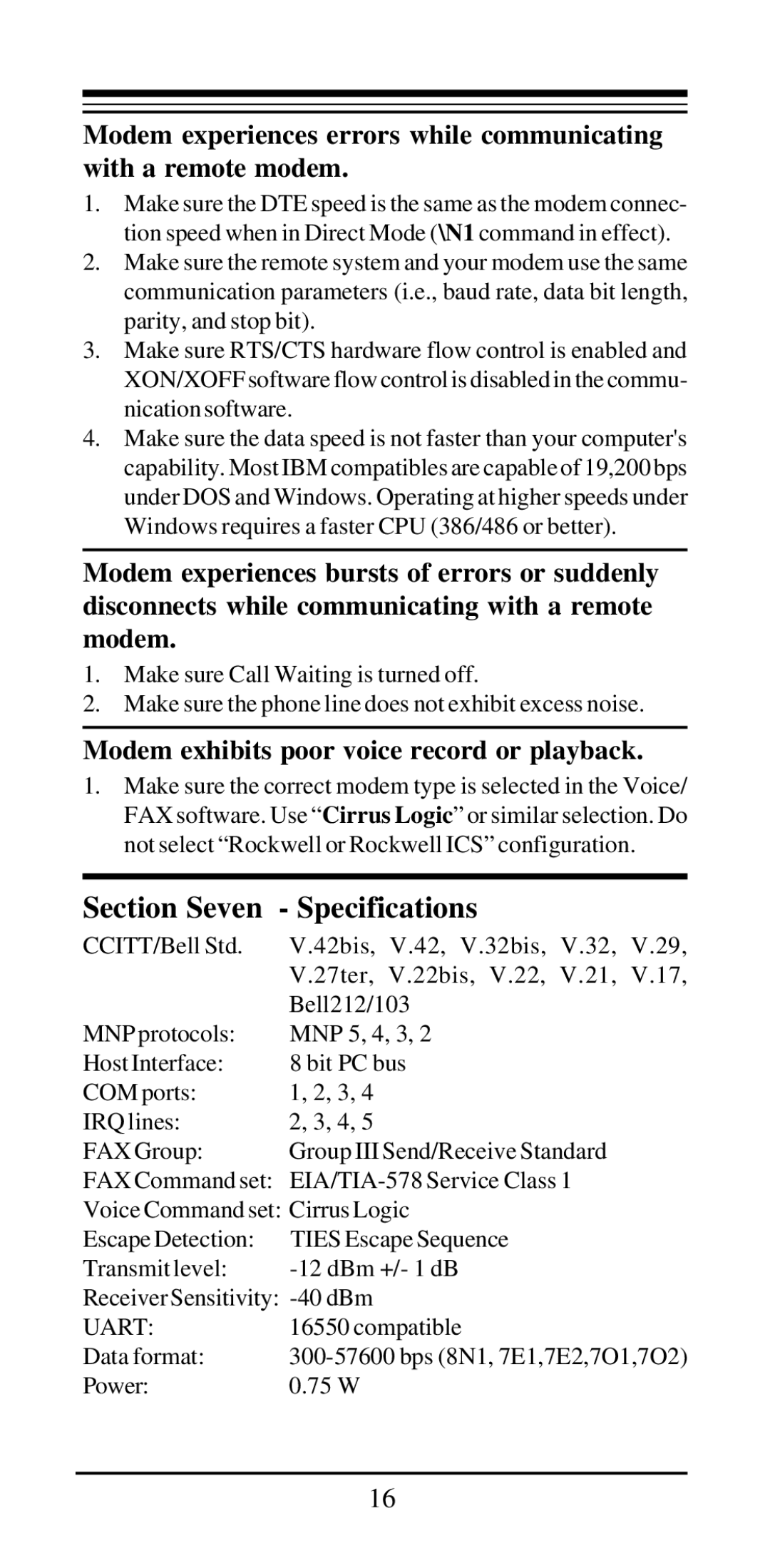
Modem experiences errors while communicating with a remote modem.
1.Make sure the DTE speed is the same as the modem connec- tion speed when in Direct Mode (\N1 command in effect).
2.Make sure the remote system and your modem use the same communication parameters (i.e., baud rate, data bit length, parity, and stop bit).
3.Make sure RTS/CTS hardware flow control is enabled and XON/XOFF software flow control is disabled in the commu- nication software.
4.Make sure the data speed is not faster than your computer's capability. Most IBM compatibles are capable of 19,200 bps under DOS and Windows. Operating at higher speeds under Windows requires a faster CPU (386/486 or better).
Modem experiences bursts of errors or suddenly disconnects while communicating with a remote modem.
1.Make sure Call Waiting is turned off.
2.Make sure the phone line does not exhibit excess noise.
Modem exhibits poor voice record or playback.
1.Make sure the correct modem type is selected in the Voice/ FAX software. Use “ Cirrus Logic” or similar selection. Do not select “Rockwell or Rockwell ICS” configuration.
Section Seven | - Specifications |
CCITT/Bell Std. | V.42bis, V.42, V.32bis, V.32, V.29, |
| V.27ter, V.22bis, V.22, V.21, V.17, |
| Bell212/103 |
MNP protocols: | MNP 5, 4, 3, 2 |
Host Interface: | 8 bit PC bus |
COM ports: | 1, 2, 3, 4 |
IRQ lines: | 2, 3, 4, 5 |
FAX Group: | Group III Send/Receive Standard |
FAX Command set: | |
Voice Command set: Cirrus Logic | |
Escape Detection: | TIES Escape Sequence |
Transmit level: | |
Receiver Sensitivity: | |
UART: | 16550 compatible |
Data format: | |
Power: | 0.75 W |
16
